#egyptianhistory
Text
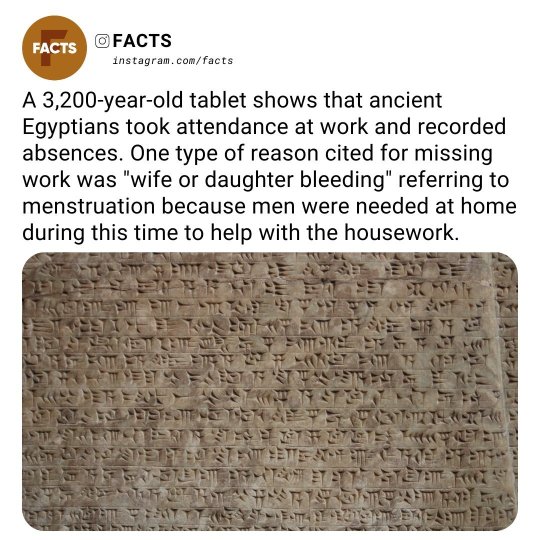
facts
6 notes
·
View notes
Photo

Ramses III Making Incense Offering to Amun at Medinet Habu 𓂦𓂋𓏏𓋀𓏏𓏏 “ḏšr.t ı͗mnet.t” ‘the sacred west’ Notice the unique and unusual placement of the sun-disk 𓇋𓏏𓈖𓇳 “ı͗tn” on the top of the head 𓁷𓏤 “ḥr” of Ramses III (𓁛𓄟𓊃𓊃𓋾𓈎𓉺) “rˁ-ms-s ḥq3-iwnw”, this was reserved strictly for the gods 𓊹𓊹𓊹 “nṯrw” such as Ra, Hathor, Sekhmet, Tefnut, Khonsu, etc. Ramses III is dressed in a high status regalia and offers the state god, Amun 𓇋𓏠𓈖𓁩 “ı͗mn” ‘the hidden one’, burning incense 𓊹𓌢𓏏𓂋𓏸𓏬 “snṯr” in a traditional posture of devotion. Usermaatre-Meryamun Rameses III was the second Pharaoh 𓉐𓉼 “pr-ˁ3” ‘Great House’ of the Twentieth Dynasty in Ancient Egypt. He is thought to have reigned from 1186-1155 BC and is considered to be the last great monarch of the New Kingdom to wield any substantial authority over Egypt - Black Land - Kemet 𓆎𓅓𓏏𓊖 “kmt” His long reign saw the decline of Egyptian 𓂋𓐝𓎀𓀂𓀭𓏪 “rmṯ” political and economic power, linked to a series of invasions and internal economic problems, such at the rising power 𓊪𓎛𓏏𓄇𓄇 “pḥty” of the priesthood, that also plagued pharaohs before him. This coincided with a decline in the cultural sphere of Ancient Egypt. 📸 @peter.copek (thank you for the high-res image) 𓋹𓎬𓋹𓎬𓋹𓎬𓋹𓎬𓋹𓎬𓋹𓎬𓋹𓎬𓋹𓎬𓋹𓎬𓋹𓎬𓋹𓎬𓋹𓎬𓋹𓎬𓋹𓎬𓋹𓎬𓋹𓎬 @egyptologylessons 𓋹𓊽𓋴𓆖𓎛𓇳𓎛 𓊁𓊁𓊁𓊁𓊁𓊁𓊁𓊁𓊁𓊁𓊁𓊁𓊁𓊁𓊁𓊁𓊁 #Ancientegypt #ägypten #egyptianhistory #egyptology #hieroglyphs #egypte #egitto #埃及 #مصر #egipto #이집트 #ramsesiii #medinethabu #amun #temple #incense #offering #pharaoh (at Medinet Habu) https://www.instagram.com/p/CjDuafKOIUU/?igshid=NGJjMDIxMWI=
#ancientegypt#ägypten#egyptianhistory#egyptology#hieroglyphs#egypte#egitto#埃及#مصر#egipto#이집트#ramsesiii#medinethabu#amun#temple#incense#offering#pharaoh
98 notes
·
View notes
Text
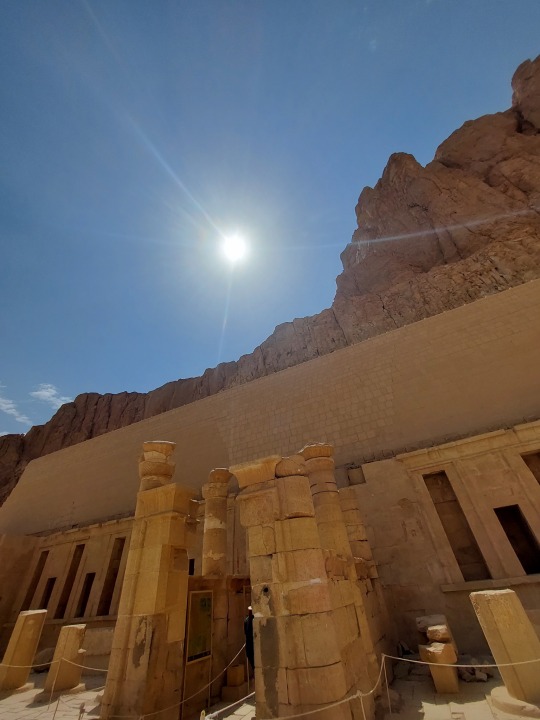
#luxor#luxor egypt#luxor temple#luxor temples#luxoregypt#egypt#ägypten#aegypten#egypte#temple#ancient tample#egyptian#egyptian history#egyptian pantheon#egyptianhistory#temple ruins#ruin#ruins#sun#sunny#sahara#desert#mine#my picture#my pictures
6 notes
·
View notes
Text

"I am the Lord of the banks of the Nile and I bring the flood to enrich the land." - Hymn to the Royal Flood, New Kingdom period (1550-1070 BC)
#AncientEgypt#Pharaohs#NileRiver#EgyptianArt#Hieroglyphics#Pyramids#Sphinx#EgyptianMythology#CulturalHeritage#EgyptianHistory
2 notes
·
View notes
Photo

Egyptian animal mummy 🐕 Lovingly preserved, a hunting dog whose bandages fell off long ago likely belonged to a king. As a royal pet, it "would have been fed nibbly bits and spoiled rotten," says Egyptologist Salima Ikram. When it died, it was interred in a specially prepared tomb in the Valley of the Kings. #kingsway #dogoftheday #doglover #dogworld #kingsandqueens ##egypt🇪🇬 #egyptians #egyptianhistory #doggydaddy #mummylife www.ancient-origins.net/king (at Catalina Foothills, Arizona) https://www.instagram.com/p/CqWkgRAJq6jNnSYt3B6nnq6vb8IegITMaZ9c9I0/?igshid=NGJjMDIxMWI=
#kingsway#dogoftheday#doglover#dogworld#kingsandqueens#egypt🇪🇬#egyptians#egyptianhistory#doggydaddy#mummylife
3 notes
·
View notes
Video
Posted @withregram • @egyptologylessons Broad Collar ca. 1479–1425 B.C. New Kingdom By the New Kingdom, broad collar necklaces were the most frequently worn pieces of jewelry among the royalty and elite in ancient Egypt. This necklace belonged to one of three foreign wives of Thutmose III. The king's name is inscribed on the backs of the falcon-headed terminals indicating that it was a gift from him to his wife. 𓋹𓎬𓋹𓎬𓋹𓎬𓋹𓎬𓋹𓎬𓋹𓎬𓋹𓎬𓋹𓎬𓋹𓎬𓋹𓎬𓋹𓎬𓋹𓎬𓋹𓎬𓋹𓎬𓋹𓎬𓋹𓎬 📸 @egyptologylessons 𓋹𓊽𓋴𓆖𓎛𓇳𓎛 © (@metmuseum and description) 𓊁𓊁𓊁𓊁𓊁𓊁𓊁𓊁𓊁𓊁𓊁𓊁𓊁𓊁𓊁𓊁𓊁 #Ancientegypt #ägypten #egyptianhistory #egyptology #hieroglyphs #egypte #egitto #埃及 #مصر #egipto #이집트 #collar #egyptianjewelry #falcon #metropolitanmuseumofart (at The Metropolitan Museum of Art, New York) https://www.instagram.com/p/CgKXBsUrZ4y/?igshid=NGJjMDIxMWI=
#ancientegypt#ägypten#egyptianhistory#egyptology#hieroglyphs#egypte#egitto#埃及#مصر#egipto#이집트#collar#egyptianjewelry#falcon#metropolitanmuseumofart
9 notes
·
View notes
Text


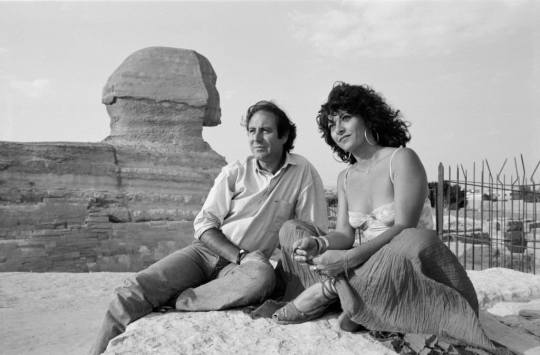

What Egypt looked like in the 1980s Through these Stunning Photos
#egypt#egyptianhistory#egyptlife#1980s#historicalphotos#egypthistory#egyptianstreets#oldegypt#vintageegypt
2 notes
·
View notes
Text
#EgyptThe #secret of the #power of #Egyptiancivilization #selfmotivation #Selfconfidence is the secret of the will and energy of a successful person
#EgyptianCivilization#PowerofEgypt#motivatoinal story#ancient egypt#EgyptianHistory#EgyptianMysteries#MotivationMonday#BelieveInYourself#DreamBig#AchieveYourGoals#SelfDevelopment#Pyramids#Hieroglyphics
0 notes
Photo
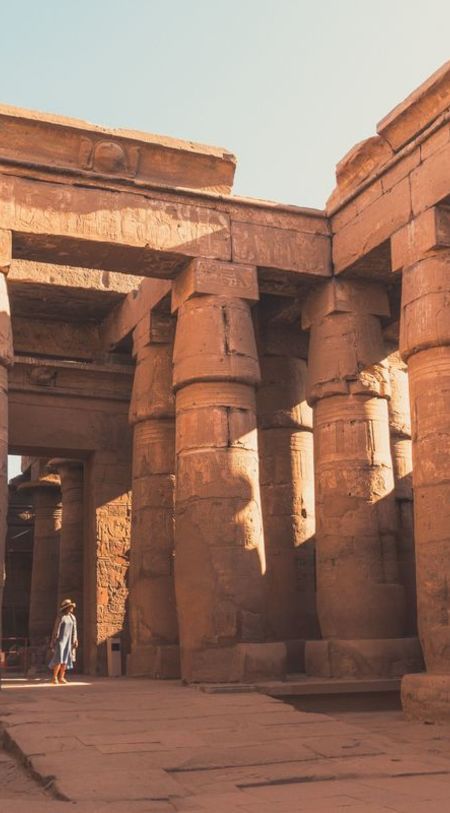
Backpacking Egypt Travel Guide 2018
Unleash your wanderlust and get lost in the kaleidoscope of ancient treasures - let our flowery backpacking Egypt travel guide be your compass to unforgettable adventures in 2018.
0 notes
Text
youtube
Egypt is a country located in the northeastern region of Africa, with a small part of its territory extending into the Middle East. It is bordered by the Mediterranean Sea to the north, the Gaza Strip and Israel to the northeast, the Red Sea to the east, Sudan to the south, and Libya to the west. Here are some key aspects of Egypt:
Capital and Largest City: The capital city of Egypt is Cairo, which is also the largest city in the country.
Ancient Civilization: Egypt has a rich history dating back to ancient times. It is famous for its ancient civilization along the Nile River, with iconic landmarks such as the Pyramids of Giza, the Sphinx, and numerous temples and tombs.
Nile River: The Nile, one of the world's longest rivers, flows through Egypt, providing fertile land for agriculture. The river has been a crucial factor in the development of Egyptian civilization.
Modern Egypt: In addition to its ancient history, Egypt is a modern and culturally diverse country. It has a significant role in regional politics and is a member of the Arab League.
Language: Arabic is the official language of Egypt.
Religion: The majority of Egyptians are followers of Islam, predominantly Sunni Islam. Coptic Christianity is also a significant minority religion.
Economy: Egypt has a mixed economy with sectors such as agriculture, manufacturing, and services. Tourism is an essential industry, attracting visitors to explore its historical sites and enjoy the Red Sea resorts.
Political History: Egypt has experienced various periods of foreign rule, including periods of Greek, Roman, and Ottoman control. In the 20th century, Egypt gained independence from British occupation and underwent significant political changes, including the establishment of a republic.
Arab Spring: Egypt was one of the countries where significant protests occurred during the Arab Spring in 2011, leading to the ousting of President Hosni Mubarak.
Suez Canal: Egypt is home to the Suez Canal, a vital artificial waterway connecting the Mediterranean Sea to the Red Sea, facilitating international maritime trade.
Egypt's historical significance, cultural heritage, and geopolitical position make it a country of great importance in the Middle East and the wider world.
#Egypt#VisitEgypt#DiscoverEgypt#EgyptianHistory#PyramidsOfEgypt#AncientEgypt#CairoCity#LuxorTemple#NileRiver#RedSea#ValleyOfTheKings#EgyptianArt#EgyptianFood#EgyptianSunset#egyptpyramids#Youtube
0 notes
Photo
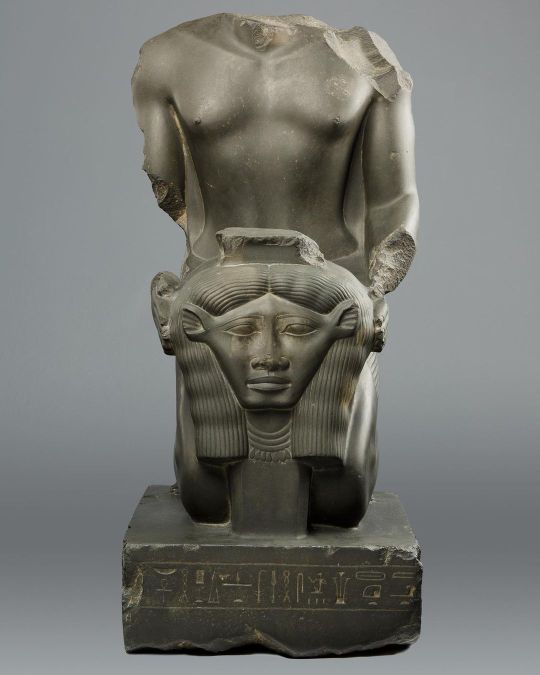
Kneeling statue of Amenemopetemhat Amenemope-em-hat 𓇋𓏠𓈖𓊒𓏏𓅓𓄂𓏏𓏤𓀼 “ı͗mn-mp-m-ḥ3.t” was director of the Singers of the North 𓎕𓏏𓏭𓈇 “mḥty” and Overseer 𓄓𓏤 or 𓅓𓂋 “mr” of the Singers 𓎛𓎿𓋴𓀁𓁐 “ḥsy” of Amenemope. The second title was inherited from his father 𓇋𓏏𓆑 “it”, whose equally fine statue 𓂙𓏏𓏭𓀾 “ḫnty” has recently been discovered at Tanis 𓆓𓂝𓈖𓏏𓊖 “ḏˁn.t”, where there was a cult of Amenemope, a form of the god Amun. The first title implies wider authority. Amenemope-em-hat holds before him the cult object of the cow-eared goddess Hathor 𓉡 “ḥw.t-ḥr” ‘The Temple of Horus’. The proportions of this figure, its muscularity, and such details as the slanted ridges of the collarbone and the shallow depression down the center of the torso represent a conscious attempt in the Late Period to emulate the classic works of the Old and Middle Kingdoms. Period: Late Period, Saite Dynasty: Dynasty 26 Reign: reign of Psamtik I Date: 664–610 B.C. Geography: From Egypt; Said to be from Memphite Region, Memphis (Mit Rahina), Ptah Temple Medium: Meta-Greywacke Dimensions: H. 64.5 × W. 32 × D. 40.5 cm, 101.6 kg (25 3/8 × 12 5/8 × 15 15/16 in., 224 lb.) 📸 @metmuseum and description 𓋹𓎬𓋹𓎬𓋹𓎬𓋹𓎬𓋹𓎬𓋹𓎬𓋹𓎬𓋹𓎬𓋹𓎬𓋹𓎬𓋹𓎬𓋹𓎬𓋹𓎬𓋹𓎬𓋹𓎬𓋹𓎬 @egyptologylessons 𓋹𓊽𓋴𓆖𓎛𓇳𓎛 © 𓊁𓊁𓊁𓊁𓊁𓊁𓊁𓊁𓊁𓊁𓊁𓊁𓊁𓊁𓊁𓊁𓊁 #Ancientegypt #ägypten #egyptology #egypte #egitto #埃及 #مصر #egipto #이집트 #egyptianstatue #saite #lateperiod #egyptianhistory #singer #meteopolitanmuseumofart (at The Metropolitan Museum of Art, New York) https://www.instagram.com/p/Coh6QEIuiwG/?igshid=NGJjMDIxMWI=
#ancientegypt#ägypten#egyptology#egypte#egitto#埃及#مصر#egipto#이집트#egyptianstatue#saite#lateperiod#egyptianhistory#singer#meteopolitanmuseumofart
43 notes
·
View notes
Text
Cairo, Egypt

Get ready to be amazed by the rich history and culture of Cairo, Egypt.
0 notes
Photo
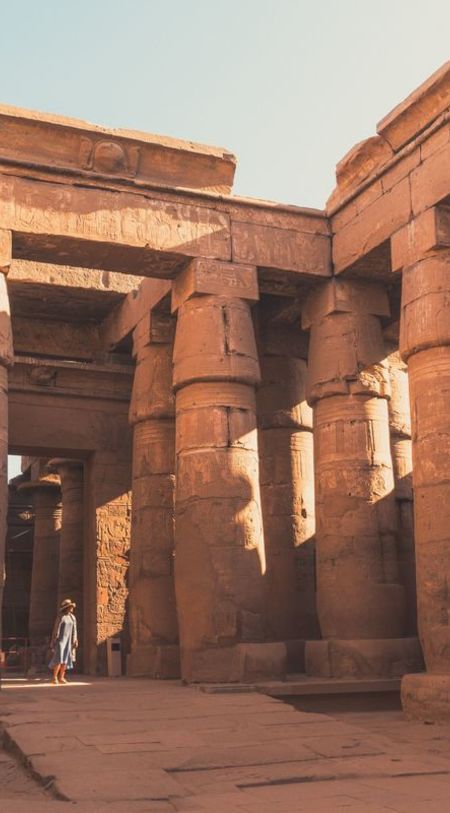
Backpacking Egypt Travel Guide 2018
Unleash your wanderlust and get lost in the kaleidoscope of ancient treasures - let our flowery backpacking Egypt travel guide be your compass to unforgettable adventures in 2018.
0 notes
Text
Old Cairo, Egypt
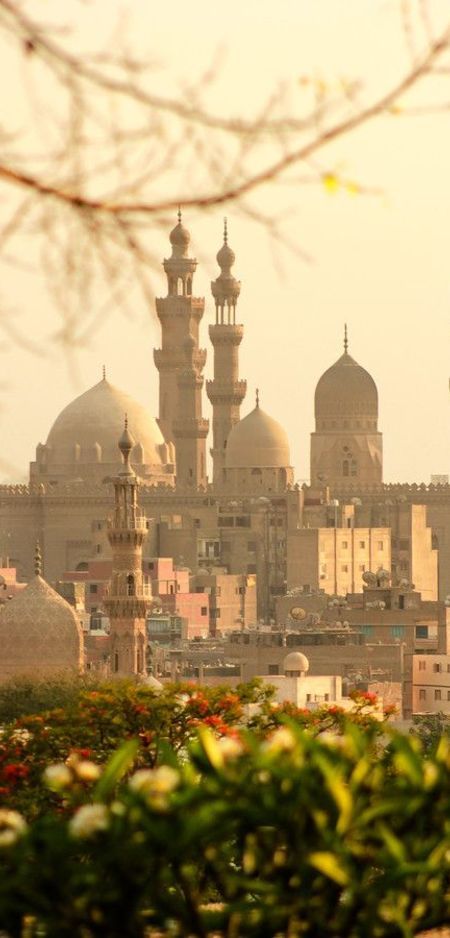
Embrace the enchanting allure of Old Cairo, a fascinating journey through centuries of jaw-dropping architecture and vibrant culture.
0 notes
Photo

Posted @withregram • @egyptology_persian Pectoral of Sheshonq I The inscriptions on the ends of the solar boat on this gold pendant encrusted with lapis lazuli and glass paste state that it belonged to Sheshonq, the son of Nimlot. This could have been Sheshonq I, the founder of the Twenty second Dynasty, and therefore the pendant would have been inherited by his son Sheshonq Il in whose tomb it was found. It’s an image of a solar barque sailing across the primordial waters below a starry heavenly vault. A solar disc is shown in the center of the boat with a depiction of the goddess Maat standing beside the god Amun-Ra-Horakhty (partly shown) seated on a throne. At the end of the barque stands Maat with winged arms outstretched towards the sun disc. In her right hand she holds a plume (a symbol of truth, justice, harmony, morality, righteousness, order, and cosmic balance). In the left she holds a hieroglyph composed of the nefer sign (a symbol of perfection or completeness), the Wadjet-eye (a symbol of eternal rebirth), and the neb basket (the word used for 'all' or 'every', and 'lord' or 'master'). Ca. 945-924 BC Cairo Museum Photo by sergiothirteen . #cairomuseum #grandegyptianmuseum #Egyptologist #neuesmuseum #newkingdom #archeology #amazingegypt #ancientegypt #ancient #ancient_history #egyptianmuseum #egyptology #egyptianmagic #egyptianmythology #egyptianhistory #iloveegypt #visitegypt #باستان #باستان_شناسی #تاریخ_مصر #مصر_باستان #تاریخ_باستان #louvremuseum #britishmuseum (at Egyptian Museum) https://www.instagram.com/p/ChaWS2UMKer/?igshid=NGJjMDIxMWI=
#cairomuseum#grandegyptianmuseum#egyptologist#neuesmuseum#newkingdom#archeology#amazingegypt#ancientegypt#ancient#ancient_history#egyptianmuseum#egyptology#egyptianmagic#egyptianmythology#egyptianhistory#iloveegypt#visitegypt#باستان#باستان_شناسی#تاریخ_مصر#مصر_باستان#تاریخ_باستان#louvremuseum#britishmuseum
6 notes
·
View notes
Text
Cleopatra Unveiled: 6 Astonishing Secrets You'd Regret Not Knowing
Cleopatra VII, the last Pharaoh of Egypt, is one of history's most enigmatic and intriguing figures. Her life and reign have captivated the imaginations of people for centuries, and her story is steeped in mystery and legend. While we may never know all there is to know about Cleopatra, there are several astonishing secrets about her that shed light on her remarkable life and legacy. In this article, we'll delve into six of these secrets that you'd regret not knowing.
Secret 1: Cleopatra's Multilingualism
Cleopatra was not just a ruler; she was a highly educated woman who spoke multiple languages fluently. Beyond her native Greek, she also mastered Egyptian, Latin, and several other languages. Her linguistic prowess allowed her to communicate effectively with foreign dignitaries and negotiate alliances with powerful Roman leaders like Julius Caesar and Mark Antony. Cleopatra's ability to converse in different tongues was a key asset in her political strategies, enabling her to navigate the complex diplomatic landscape of her time.
Secret 2: Her Beauty Was More Than Skin Deep
Cleopatra is often depicted as one of the most beautiful women in history, but her allure extended far beyond her physical appearance. While she was undoubtedly attractive, it was her charisma, intelligence, and charm that truly won over the hearts of powerful men like Julius Caesar and Mark Antony. Cleopatra's ability to captivate those around her through her wit and personality played a significant role in her political influence and her ability to shape the course of history.
Secret 3: Cleopatra's Ingenious Beauty Secrets
Cleopatra's legendary beauty has inspired countless beauty regimens throughout history. One of her most famous beauty secrets was her use of milk baths. She believed that bathing in milk helped maintain her soft and radiant skin. Cleopatra also used a variety of natural ingredients, such as honey and aloe vera, in her skincare routine. Her dedication to self-care and her innovative approach to beauty treatments highlight her commitment to maintaining her image as a powerful and alluring queen.
Secret 4: Her Role in Egyptian Religion
Cleopatra understood the importance of aligning herself with the religious beliefs of her subjects. She presented herself as the living embodiment of the Egyptian goddess Isis, emphasizing her divine connection and her role as a protector of the Egyptian people. By intertwining her image with Egyptian religion, Cleopatra gained the support and loyalty of her subjects, strengthening her position as Pharaoh.
Secret 5: Cleopatra's Diplomatic Maneuvers
Cleopatra's political acumen was one of her most remarkable qualities. She navigated the tumultuous political landscape of the Roman Republic with finesse, forming strategic alliances with powerful Roman leaders. Her relationships with Julius Caesar and Mark Antony were instrumental in maintaining her throne and protecting Egypt's interests. Cleopatra even accompanied Caesar to Rome, a bold move that showcased her influence and commitment to her kingdom.
Secret 6: Her Tragic End
Cleopatra's life took a tragic turn after the defeat of Mark Antony and her lover's subsequent suicide. Faced with the impending capture by Octavian (later known as Augustus), Cleopatra made the fateful decision to end her own life. The method she chose was the bite of an asp, a venomous snake. This dramatic and iconic death symbolized her unwavering dedication to preserving her dignity and autonomy, even in the face of defeat.
In conclusion, Cleopatra's life is a tapestry of astonishing secrets and remarkable achievements. Her multilingualism, intelligence, beauty secrets, religious symbolism, diplomatic maneuvers, and tragic end all contribute to her enduring legacy. Cleopatra's story serves as a testament to the power of women in history and the indomitable spirit of a queen who left an indelible mark on the ancient world. To truly appreciate the depth of her legacy, one must delve into these astonishing secrets that reveal the woman behind the legend – Cleopatra Unveiled.
#CleopatraRevealed#CleopatrasSecrets#HistoricalMysteries#AncientEgypt#PharaohsLegacy#QueenOfTheNile#CleopatrasBeauty#MultilingualQueen#PowerfulWomenInHistory#CleopatrasCharm#EgyptianHistory#LegendaryRuler#BeautySecretsOfCleopatra#DiplomaticGenius#CleopatrasAllure#RoyalDynasty#EnigmaticQueen#CleopatrasLife#HistoricalFigures#TragicEndOfCleopatra
0 notes